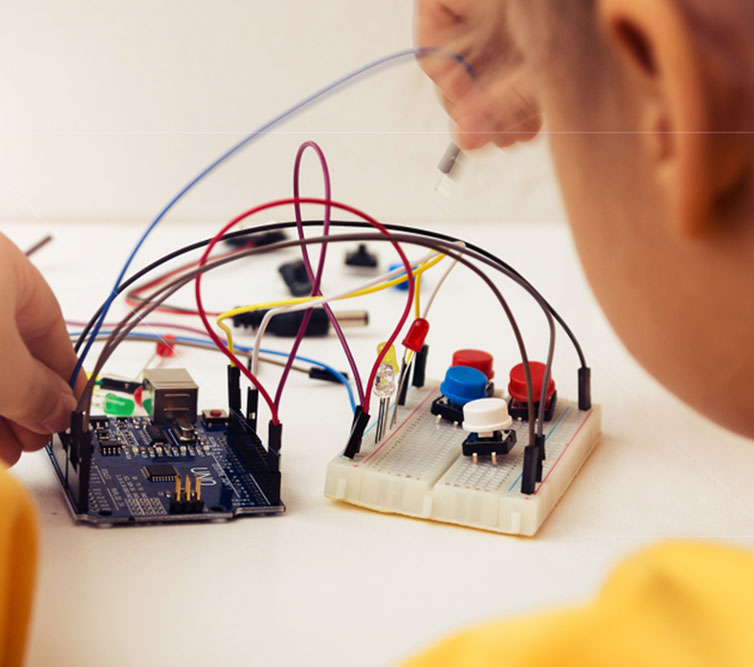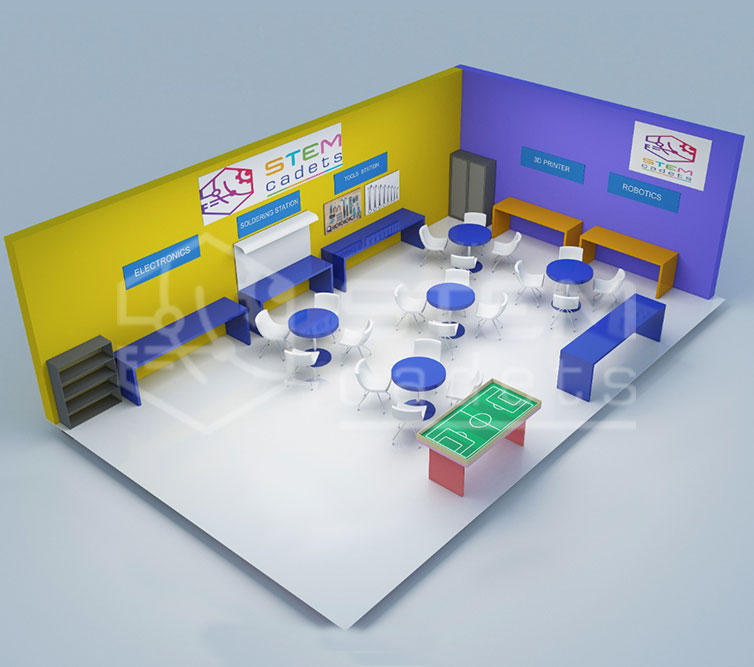Offerings
STEM Cadets offers a wide range of programs that students can think out of the box.

Robotics
Studies have shown that robotics is one of the most successful motivating factors to get students interested in STEM fields, Through teamwork, students are actively engaged in 4Cs (Collaboration, Communication, Creativity and Critical Thinking) which are the key 21st Century work-life skills to lead them to their future success.
When students are provided an environment in which they can build robots of their own, they are being provided with an opportunity to exhibit their accomplishments to the world proudly.

Coding
Young minds are adaptable and malleable. They are quickly able to absorb and retain knowledge. Kids that are exposed to coding at a very young age, have the benefit of learning how to critically assess situations, explore different perspectives, construct creative solutions, and execute the trial and error learning process.
The earlier kids learn how to code, the easier it will be for them to master this skill and all the subsequent skills coding encourages. Coding for kids encourages logic, reasoning, and critical thinking.

Basic Electronics
Middle school STEM curriculum curated by curriculum experts for teaching the basics of electronics to kids through activities such as glowing an LED, making a DIY turntable, control DC and servo motors, using touch sensors to classify objects and conductors and insulators, etc.
Students will have a basic understanding of electronics, circuit design, actuators and sensors with the help of a wide variety of STEM activities.

IoT
The Internet of things curriculum has specially been designed for students to introduce them to the wonders of IoT, home automation, and plant health monitoring through exciting hands on STEM activities and projects. Kids are already actively engaging with IoT devices on a regular basis.
As we move into an even more digital world, it would be great to see tech companies and educational settings putting processes into places that consider ethics, security, and privacy for our kids.

3D Printing
3D printing describes the process of creating a digital model and then sending that file to be manufactured as a physical, three-dimensional object. If you’re wondering whether or not this is safe for kids, then don’t worry! This activity is completely safe for everyone, as long as they follow all the safety precautions. Keeping the area clean and ensuring children wash their hands after 3D Printing is also important. 3D Printing is vital for a child’s creative and critical thinking skills.
This is considered an important aspect of STEM learning as well. 3D Printing applications spread far and wide.

Drones
Drones are also known as Unmanned Aerial Vehicles that can be controlled using a ground control system or Transmitter remotely by the pilot. Drones are used for a variety of purposes - Surveillance, Delivery, Inspection, Mapping, Photography, and many more. As you can see drones are used to perform various tasks it also helps kids to acquire knowledge of various technologies.
Kids are naturally excited and curious to perform experiments, drones offer them a chance to learn and solve problems with a hands on drone STEM activity.

App Inventor
MIT App Inventor is an application that helps you to create apps for Android phones with a web browser. You can test your apps either by connecting a phone or an on-screen phone emulator. With an account, MIT App Inventor server can save all your work and help you keep track of your projects.
MIT App Inventor comes with a user-friendly interface that has two main editors. The first one is the design editor, while the other includes the block editor. Basically, the design editor is a drag and drop interface. It helps to layout all the elements of the application’s user interface.

Innovation lab
Innovation is an ongoing process. Everyday new and creative techniques are being developed to enhance the mental horizons of learners. Labs such as language labs, STEM labs etc are constantly being created to help in the teaching /learning process.
The materials and resources provided in these labs make appropriate and well matched educational aids to learning. The educator can use the valuable time saved in the research and development of these resources to focus on the learners’ needs in the classroom. The prime goal is to introduce innovation labs for classes in schools to deliver hands-on, authentic, and exciting learning experience to children.